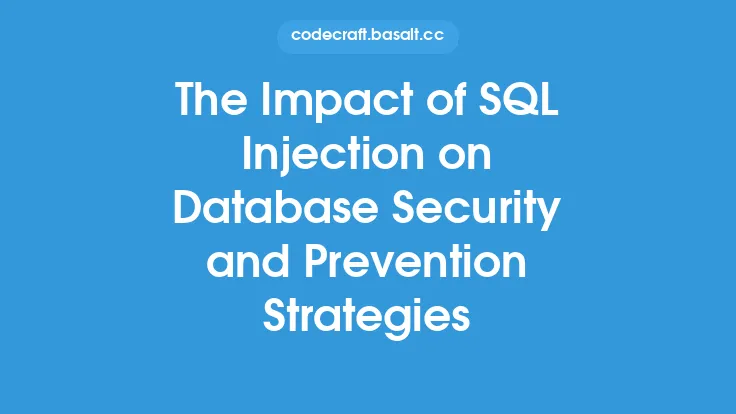Intrusion detection and prevention systems (IDPS) are a crucial component of network security, designed to identify and prevent potential threats in real-time. These systems have become an essential tool for organizations to protect their networks from malicious activities, such as hacking, malware, and denial-of-service (DoS) attacks. In this article, we will delve into the world of IDPS, exploring their history, types, components, and functionality, as well as their benefits and challenges.
History of Intrusion Detection and Prevention Systems
The concept of intrusion detection systems (IDS) dates back to the 1980s, when the first IDS was developed by Dorothy Denning and Peter Neumann. Initially, IDS focused on detecting anomalies in network traffic, using statistical methods to identify potential threats. Over time, IDS evolved to include more advanced techniques, such as signature-based detection and protocol analysis. The introduction of intrusion prevention systems (IPS) in the late 1990s marked a significant shift in the field, as IPS not only detected but also prevented intrusions in real-time. Today, IDPS combines the capabilities of both IDS and IPS, providing a comprehensive solution for network security.
Types of Intrusion Detection and Prevention Systems
There are several types of IDPS, each with its own strengths and weaknesses. Network-based IDPS (NIDPS) monitors network traffic, analyzing packets and identifying potential threats. Host-based IDPS (HIDPS) focuses on individual hosts, monitoring system calls and identifying malicious activity. Protocol-based IDPS (PIDPS) analyzes network protocols, such as TCP/IP, to identify anomalies. Hybrid IDPS combines multiple approaches, providing a more comprehensive solution. Additionally, there are cloud-based IDPS and virtual IDPS, which offer flexibility and scalability.
Components of Intrusion Detection and Prevention Systems
IDPS typically consists of several components, including sensors, management consoles, and databases. Sensors are responsible for collecting and analyzing network traffic, using techniques such as packet capture and protocol analysis. Management consoles provide a centralized interface for configuring and monitoring IDPS, as well as responding to alerts. Databases store information about known threats, vulnerabilities, and network traffic patterns, enabling IDPS to make informed decisions about potential threats.
Functionality of Intrusion Detection and Prevention Systems
IDPS uses a variety of techniques to identify and prevent intrusions, including signature-based detection, anomaly-based detection, and protocol analysis. Signature-based detection involves comparing network traffic to known threat signatures, identifying matches and alerting administrators. Anomaly-based detection uses statistical methods to identify unusual network activity, which may indicate a potential threat. Protocol analysis involves examining network protocols, such as TCP/IP, to identify anomalies and potential threats. IDPS can also use techniques such as behavioral analysis and machine learning to improve detection accuracy.
Benefits of Intrusion Detection and Prevention Systems
The benefits of IDPS are numerous, including improved network security, reduced risk of data breaches, and enhanced incident response. IDPS provides real-time monitoring and analysis of network traffic, enabling administrators to respond quickly to potential threats. IDPS can also help organizations comply with regulatory requirements, such as PCI DSS and HIPAA. Additionally, IDPS can provide valuable insights into network traffic patterns, enabling administrators to optimize network performance and improve overall security posture.
Challenges of Intrusion Detection and Prevention Systems
Despite the benefits of IDPS, there are several challenges associated with their implementation and management. One of the primary challenges is the high volume of false positives, which can lead to alert fatigue and decreased effectiveness. IDPS requires regular updates and tuning to ensure accuracy and effectiveness, which can be time-consuming and resource-intensive. Additionally, IDPS can be complex and difficult to configure, requiring specialized expertise and training. Furthermore, IDPS may not be effective against unknown or zero-day threats, which can evade detection.
Best Practices for Implementing Intrusion Detection and Prevention Systems
To ensure the effective implementation and management of IDPS, several best practices should be followed. First, IDPS should be carefully configured and tuned to minimize false positives and optimize detection accuracy. Regular updates and maintenance are essential to ensure IDPS remains effective against evolving threats. Additionally, IDPS should be integrated with other security systems, such as firewalls and antivirus software, to provide a comprehensive security solution. Finally, IDPS should be continuously monitored and analyzed, using techniques such as log analysis and threat intelligence to improve detection accuracy and response times.
Future of Intrusion Detection and Prevention Systems
The future of IDPS is exciting and rapidly evolving, with advances in technologies such as artificial intelligence, machine learning, and cloud computing. Next-generation IDPS will likely incorporate these technologies, providing improved detection accuracy and response times. Additionally, IDPS will need to adapt to emerging threats, such as IoT-based attacks and cloud-based threats. The use of IDPS in cloud environments will become increasingly important, as organizations move more of their infrastructure and data to the cloud. Furthermore, IDPS will need to be integrated with other security systems, such as security information and event management (SIEM) systems, to provide a comprehensive security solution.





